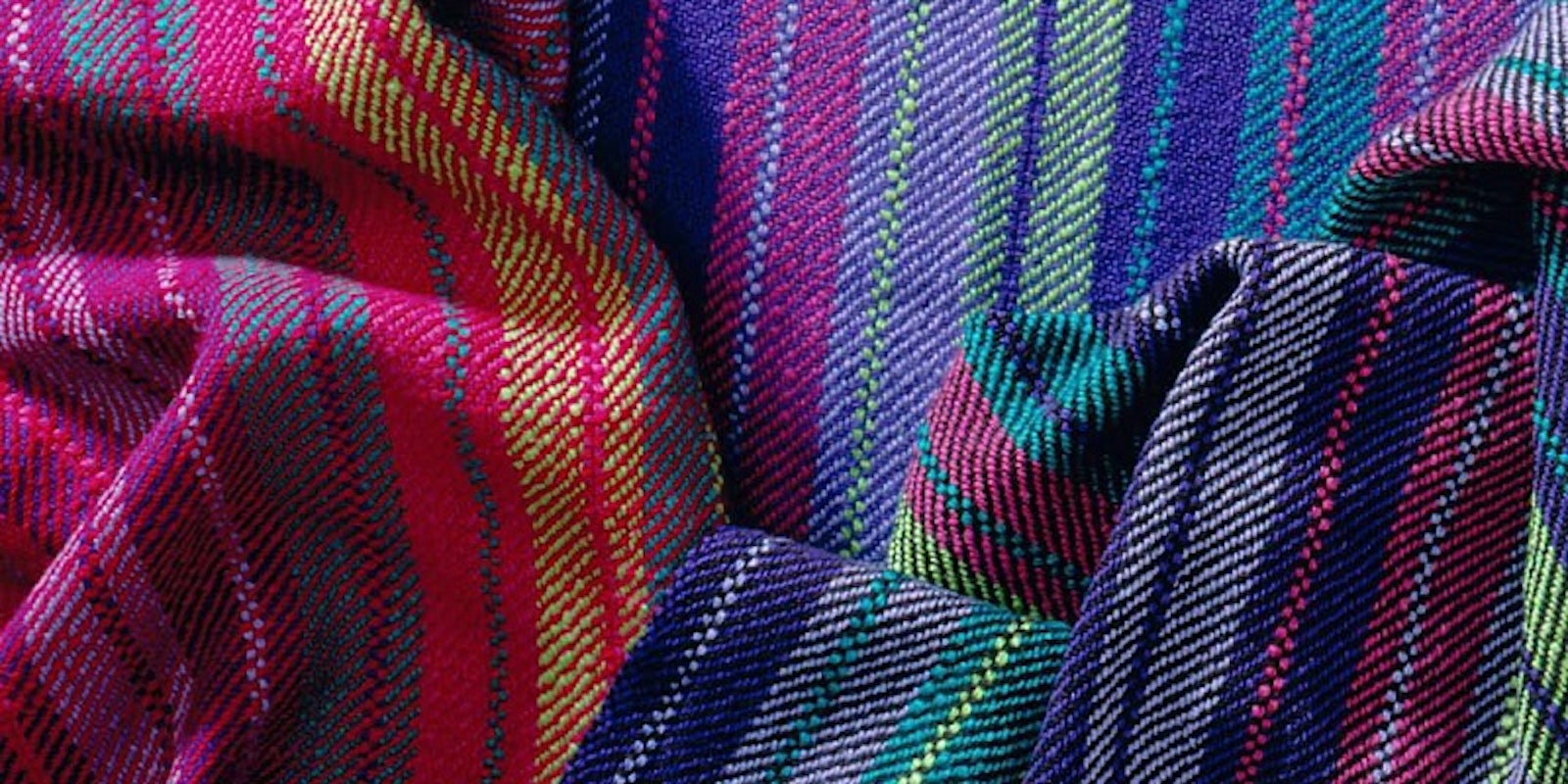Christina's cloth beam, filled with soon-to-be twill towels, ready to be cut off the loom.
Spring is such a wonderful time of year! It seems that every day the neighborhood gets a little more colorful as more and more flowers burst into bloom, from the bright reds of the barrel cacti to the less densely packed white blooms of the yucca. On my daily walks, it’s hard not to find inspiration in every clump of wildflowers peeking out from behind a creosote bush and in every cactus garden that’s bursting with blooms. Spring is also a time when I want to get back to weaving basics and work with fibers and structures that I know and love. In this case, it means I’ve got twill towels on my mind.
I know I’ve waxed poetic about twill many times before; it’s hard not to when it’s such a wonderful, versatile structure. I’m sure I’m not alone in that the second weave structure I learned (after plain weave, of course) was twill. It’s easy to warp, easy to remember the treadling, and creates cloth with great drape. Plus it doesn’t hurt that while it’s a simple-to-weave structure, it looks far more complicated than it really is to all those non-weavers out there.
What I love most about twill, though, is how once you understand it you open up an even bigger world of possibilities. Twill is one of those wonderful structures that if you get bored at the current pattern, you can easily change up the treadling to create something else. I easily get bored on the loom if I’m doing too much of the same, so the versatility of twill appeals to me. I can warp the loom for 6 (or more) towels in a simple, 4-shaft twill and make each one different simply by adjusting my treadling. It’s downright magical!
The key to twill is to understand it—how it works, how it behaves, and how to adjust as needed to get the weave you want. Whether you’re weaving with 4, 8, or even more shafts, the basics are all the same. So how did I learn enough about twill to go on many twill adventures on my loom? I was lucky enough to be in the studio during the filming of Robyn Spady’s videos Totally Twill: The Basics andTotally Twill: Beyond the Basics](. I thought I was there to learn about the process of making a video, but much of what I took away from that video shoot was a better understanding of twills of all kinds, from simple diamonds to more complex corkscrew and undulating twills. I learned how to adjust an 8-shaft draft for a 4-shaft loom and what, exactly a network draft is and how to design my own.
Since that wonderful few days spent in the studio with Robyn, I’ve been able to apply what I learned to my own weaving with excellent results. It was then that I really realized how much you can grow as a weaver simply by understanding a weave structure better. Having that initial knowledge was so empowering because it gave me confidence to explore twill and new patterns on my own. Amazing!
Next time I warp my loom this spring, it will most likely be to weave a fun and functional set of twill dish towels. I know the cloth will have great drape and absorb liquids with ease. I know my patterns will be beautiful and if I don’t like what I’m weaving or get bored with it, changing my project is as simple as moving my feet in a new pattern.
Happy Weaving!



